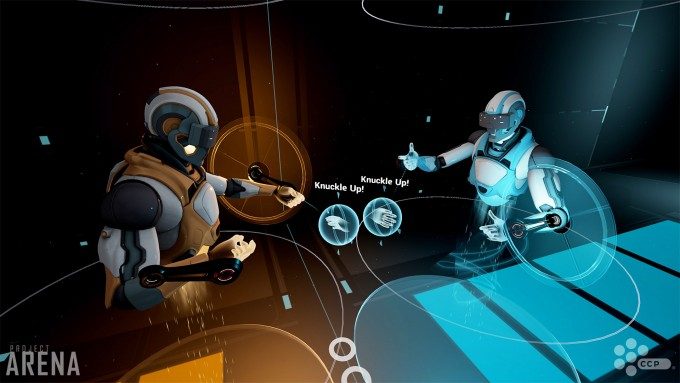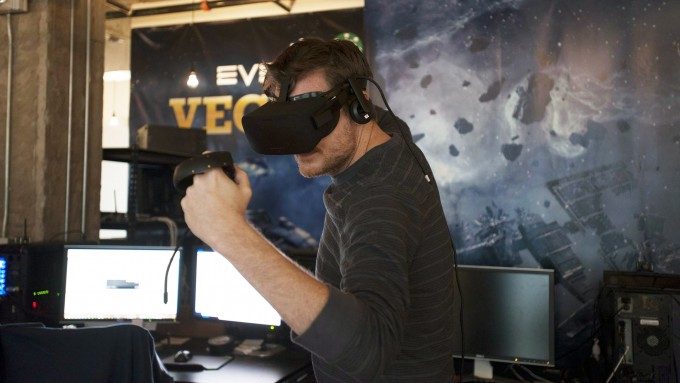
Without spectators, a ‘sport’ is just a ‘game’. Playing to a crowd is a natural fit for E-sports, and it’s clear that CCP have paid close attention to satisfying the spectators in Project Arena as well as the players.
“…we’ve got a couple of people in the Brawl arena and four or five of us in the studio ‘courtside’ as giants looking down on these little guys playing, and we all cheer at the same time—we know we’ve got something!” said Kraver. “I envision a day where you’re at the office and the world championship of Project Arena is going on and you pull out your Gear VR and watch the match, and you can’t wait to get home so you can enter the tournament yourself. So by focusing on the player as well as the spectator, we’re making an all-around compelling E-sport experience. It was great seeing everyone at Fanfest in line staring at the matches playing out on the big screen in the demo room.”
But spectators aren’t just watching to see how the score comes to pass; an element of traditional sports is the drama and personalities behind the players. Thanks to the expressiveness of motion input, players have many opportunities to come into their own. This is perhaps showcased best during the ‘knuckle-up’ sequence before each match in Project Arena, where both players are positioned close to each other, much like a boxing weigh-in. You can trash-talk and gesture all you like, and thanks to the capacitive sensors on Touch, your fingers get involved too (although I was unable to ‘flip the bird’!).
“My favourite technique is to do an index-finger point at your opponent, then you stick your thumb up, and slide it across your neck and then with the other hand you knuckle-up to start the game. It really works, it’s very intimidating!” Kraver said.
In Kraver’s experience, people are primed for this sort of expression. It’s something that traditional games have stifled because simply lack the available input to accurately convey the player behind the avatar.
“People love to perform. I have a long background in motion capture; I remember in the late 90s, we had an electromagnetic system that could run in real-time, driving the game characters directly off the motion suit. The second you put anybody in that suit, they became some sort of diva, strutting around and posing!” said Kraver. “It’s exactly the same in my development space for Arena, where it’s like a hall of mirrors; you put anybody in there and they do all kinds of stuff, kissing their biceps, immediately performing—to themselves!”
With an increasing number of elements that mirror traditional sports—competition, drama, expression, and outcomes dependant on physical ability—VR games like Project Arena could well blur the line between E-sports and actual sports, and VR gamers may end up burning quite a few extra calories in the process.
Disclosure: CCP Games provided airfare and lodging for Road to VR to attend Fanfest 2016 where information for this article was collected.








